One day we took a rough old autorickshaw, whose driver valiantly battled the poisonous traffic snarl that thrives near the Red Fort (just past our street), and rumbled along to the somewhat more peaceful realms of New Delhi, to the National Crafts Museum. Along with the Lodi gardens and the Nizamuddin Dargar, which we have visited in previous years, it is now one of my favourite Delhi places; charming, peaceful, it unfolds many aspects of India, past and present, which can’t easily be found in this modern metropolis.
As with many places in New Delhi, the 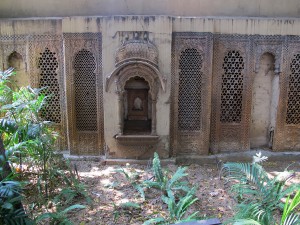 Museum is set amongst lovely trees, and its outer walls appear to be remnants of more ancient times, lacy carved stone with little niches for shrines, softened by nearby ferns and palms. Immediately inside is an open Aiyanar temple, the terracotta gods and protector figures transplanted from Tami Nadu, reproducing a sacred space which it is possible to view, and photograph, but not enter. Somehow the protector figures, the warriors and animals, manage to be fierce and friendly both at once; benevolent, I imagine, unless transgressed.
Museum is set amongst lovely trees, and its outer walls appear to be remnants of more ancient times, lacy carved stone with little niches for shrines, softened by nearby ferns and palms. Immediately inside is an open Aiyanar temple, the terracotta gods and protector figures transplanted from Tami Nadu, reproducing a sacred space which it is possible to view, and photograph, but not enter. Somehow the protector figures, the warriors and animals, manage to be fierce and friendly both at once; benevolent, I imagine, unless transgressed.
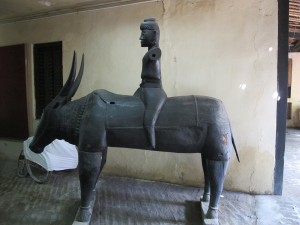 The same would be true for the striking figures in the Bhuta Gallery, although these larger–than-life wood sculpted human and animal figures are potent in their own right; the information board tells us “the divine spirit, worthy of worship and propitiation, bhuta are believed to be capable of affecting the welfare of humans and in control of the elements, especially of rain. While considered to be of generally benign temperament, bhutas can, in their malevolent form, cause harm and distress”. The bhuta here, brought from their place of creation in Karnataka, have a strong presence, but are “decommissioned”, so to speak, their “life” taken away by ritual, to be installed in new figures.
The same would be true for the striking figures in the Bhuta Gallery, although these larger–than-life wood sculpted human and animal figures are potent in their own right; the information board tells us “the divine spirit, worthy of worship and propitiation, bhuta are believed to be capable of affecting the welfare of humans and in control of the elements, especially of rain. While considered to be of generally benign temperament, bhutas can, in their malevolent form, cause harm and distress”. The bhuta here, brought from their place of creation in Karnataka, have a strong presence, but are “decommissioned”, so to speak, their “life” taken away by ritual, to be installed in new figures.
On the outer walls of one section are 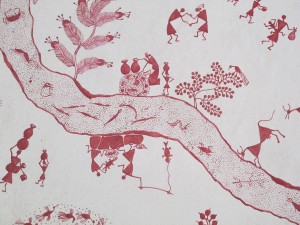 murals, painted especially for the museum, in the style of various tribal communities. I loved the complex detail but simple “stick figure” style of Warli art, originating thousands of years ago, and depicting village life with fascinating revelation. Another mural is composed of many separate squares of paintings, perhaps telling mythic tales; there are forest scenes and family scenes, yogis and woodcutters, chariots and kings. I am really unhappy that I did not take note of the style of painting, here, and know too little of Indian art to guess. I will ponderously try to transcribe the Hindi script below each image
murals, painted especially for the museum, in the style of various tribal communities. I loved the complex detail but simple “stick figure” style of Warli art, originating thousands of years ago, and depicting village life with fascinating revelation. Another mural is composed of many separate squares of paintings, perhaps telling mythic tales; there are forest scenes and family scenes, yogis and woodcutters, chariots and kings. I am really unhappy that I did not take note of the style of painting, here, and know too little of Indian art to guess. I will ponderously try to transcribe the Hindi script below each image 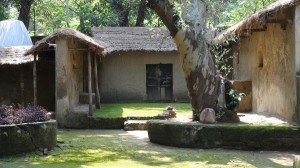 and we may be more enlightened then!
and we may be more enlightened then!
The Museum contains too much to tell of here – the recreated village scenes, with huts, buffalo carts, tools; the enormous textiles gallery; a beautiful pigeon house in a courtyard, and another ‘tulsi’ (sacred basil) courtyard, which catches the light, luminously, upon the mauve succulent plants at its centre; a whole painting gallery which sadly was closed for renovations, and other galleries of bronzes, sculpture, carved woodwork. I had read of its dusty, treasure 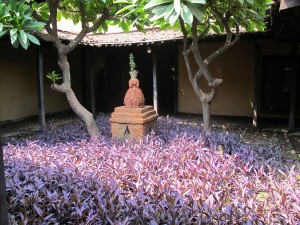 house of a gift shop, crammed and disorganised (just the sort of shop I love), but it too had been modernised and was now sparsely stocked, orderly, clinical. Because photography is forbidden in the galleries, I had hoped to be able to buy postcards or perhaps a catalogue of the museum, to remember and research some more. But nothing was available.
house of a gift shop, crammed and disorganised (just the sort of shop I love), but it too had been modernised and was now sparsely stocked, orderly, clinical. Because photography is forbidden in the galleries, I had hoped to be able to buy postcards or perhaps a catalogue of the museum, to remember and research some more. But nothing was available.
Not too far away is the Gallery of Modern Art, so we took to the footpaths lining the busy Bhairon Marg, passed the law courts (an area which felt like a whole world in itself) and resisting the imprecations of cruising autorickshaws, found our way. A stern young woman at the ticket counter brushed aside the possibility of our using credit card to pay, and when proffered cash, had no change for us. This was surprising, in a large, modern Gallery, which is one of the city’s main attractions, and which was currently hosting an exhibition of a foremost twentieth century national painter, Jamini Roy. The young woman stomped across to the gift shop on the far side of the gallery, and returned with change. On our exit, we bought cards at the gift shop, and the change had to be found at the ticket counter… I include this anecdote because it made us smile … it was so typical of India! Due to this type of scenario, Michael now carries a large bundle of small rupee notes in an inside pocket, just in case.

Jamini Roy “Jesus” (Web copy)
The Jamini Roy exhibition was wonderful, an education to me. This Bengali artist graduated from the school of art in Calcutta in the very early twentieth century, at a time when western artistic style was the acceptable canon. But nationalist (anti western) stirrings were afoot, and eastern influences being shared, such as the ideas, styles and aesthetics of Japanese painting. Roy was from a Bengali village, and merging the colours and traditional lines found there with his later influences, developed a distinctive style (which is sometimes compared to Modigliani) that would inspire others to rediscover the simplicity of folk and tribal art. Daringly, he began to paint Christ and Madonna figures also with this Indian folk influence, creating, surprisingly, a very modernist look. Because I find myself easily fascinated by such evidence of cultural movement as a historical thread, I also enjoyed the exhibitions on the second floor, which again traced the changes of the early twentieth century.
But the Gallery is huge! We exhausted ourselves after three floors, unrefreshed by a tiny samosa and chai, all that was available from the strangely empty ( of furniture too) cafeteria in its newish, echoing space. We took a rickshaw to the nearby Khan Market, in search of our favourite “tired tourist” staple, an iced coffee. Of course, Khan Market also has the attraction of having a very good branch of FabIndia … we emerged, clothing lust satisfied, with one blue kurta (for Julie) and one handsome waistcoat (for Michael) and caught a smooth, quiet electric autorickshaw home to Old Delhi.
Now I will tell you about Dilip. This kind and attentive man is the head waiter at the Tara Palace Hotel. He quietly saw to our every need, serving evening beer with his recommended peanut marsala – a truly memorable spiced salad – followed by delicious Indian dishes, some of the best we’ve had – on the rooftop. Rarely was anyone else there, as Indian guests like to eat in their rooms, and few westerners come to Chandni Chowk. One night, though, an Englishwoman was eating alone and we broke into conversation. She was a palliative care psychologist, who was on her way to Assam (where very few venture), in the far north-east of India, to meet a guru of death. I was very drawn to this unassuming, brave woman, and could immediately feel the sanity and comfort she projected, a complete lack of self importance that is very rarely found. We never saw her again. But Dilip was there each day, each evening. Eventually we drew out his story, for he spoke English quite well – clearly an educated man.
In Bihar, quite far away, Dilip has a family – his parents and his wife and new baby daughter. His face lights up with delight when he mentions his baby, whose name is Khushi – “happiness’. He has never seen Khushi, who is only a few months old, as Dilip cannot afford the fare to return to Bihar more than once or twice a year. But no matter, she is born, after years of medical difficulty; she is their happiness. His life is complete. Imagine, to live like that – perhaps for years.
Another Tara Palace story is that one day, when we emerged from the lift on our way out, we were greeted cheerily as usual by the manager at the desk and the doorman at the door. But then a definite, if suppressed, change occurred in the atmosphere, as some policemen walked in. A tension, a threat replaced the good will of just moments ago. We left. It was not our business – but I am almost certain the police were there to take their cut, to be paid off, for I have read often enough that that is how things are, in India. The writer Martin Buckley tells of being pulled over and threatened by police while riding a motor bike, and the police backing off when, removing his helmet, he revealed himself as a foreigner. So much is going on, constantly, of which we are mostly unaware. I do try to notice, though, so as to retain some discretion and sensitivity, as a stranger in this strange land. Soon we would be gone from Delhi, probably this time, forever.

Jamini Roy painting (Web copy)

Jamini Roy painting (Web copy)
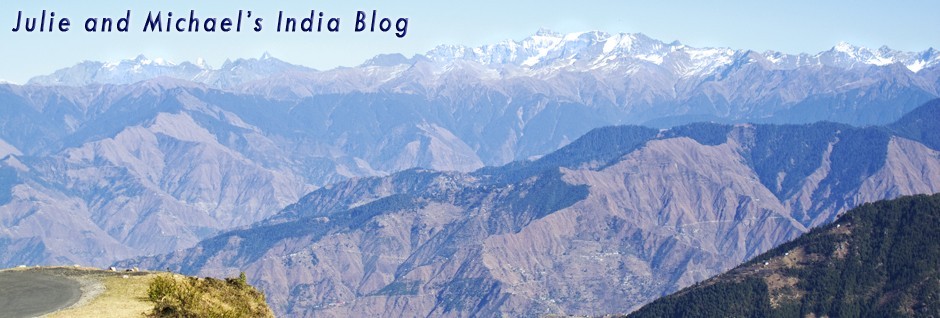
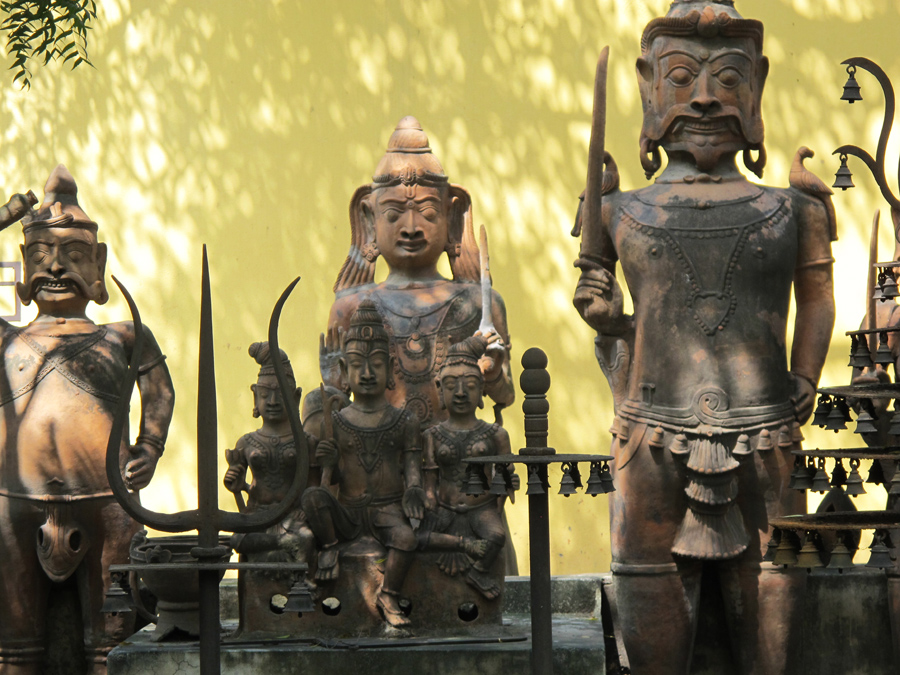
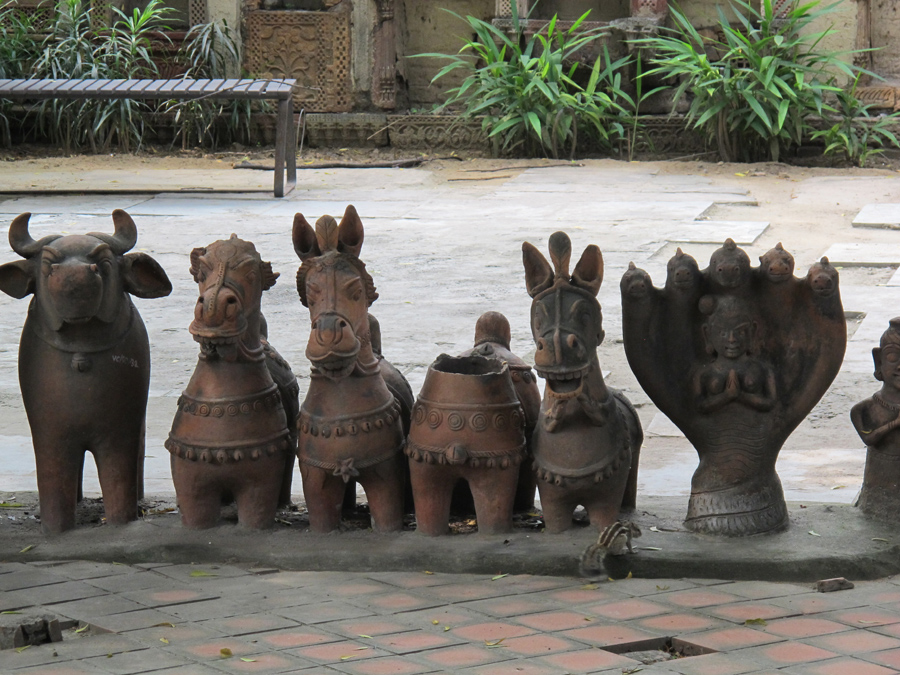
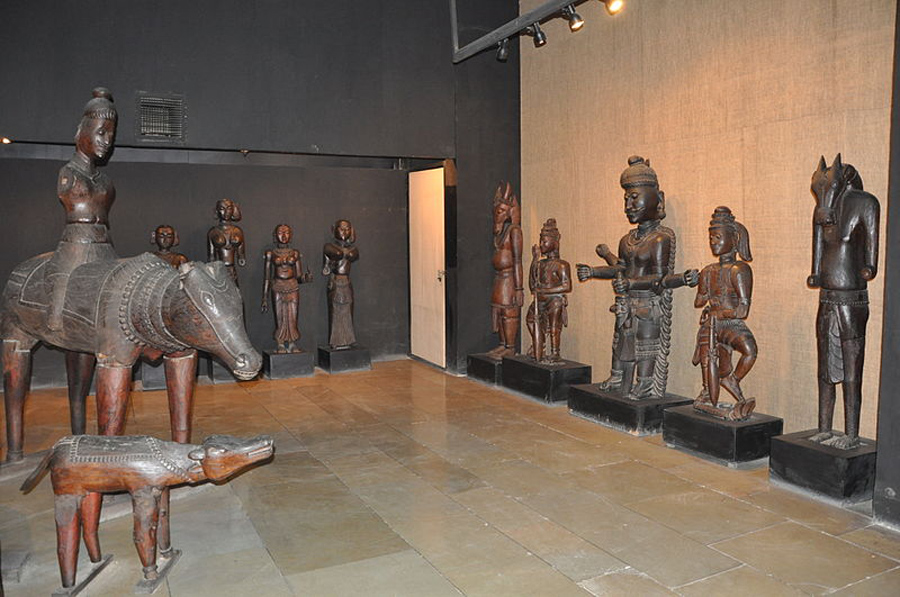
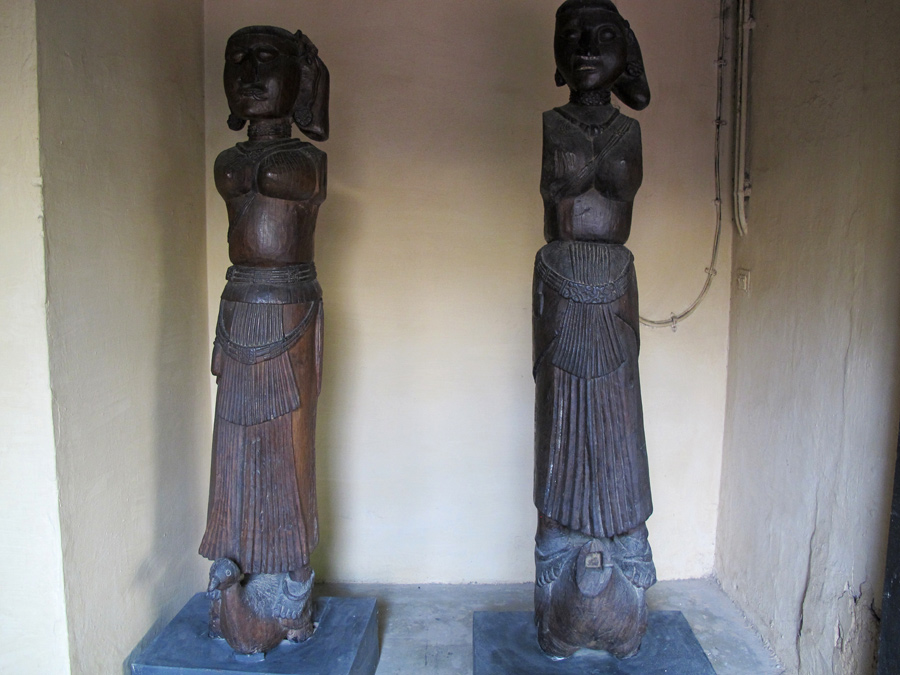
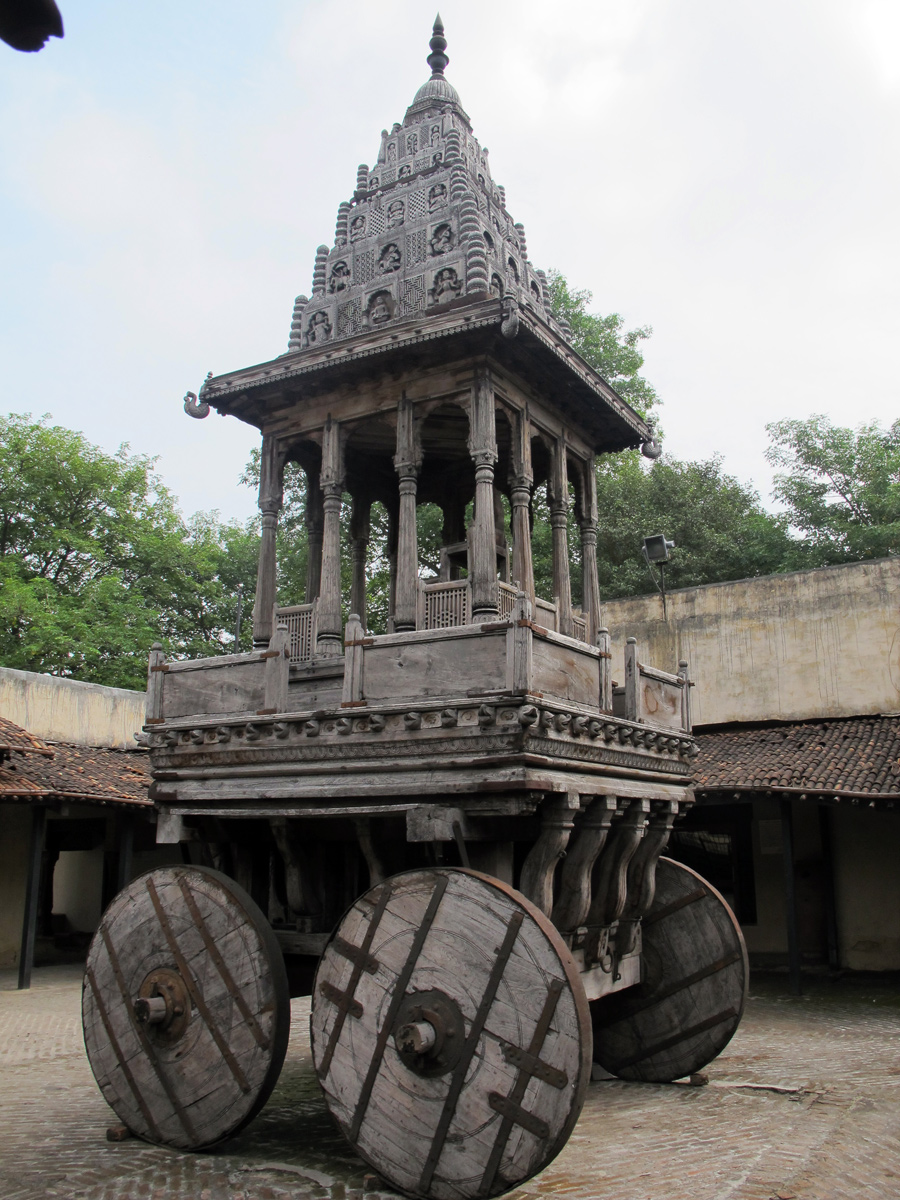
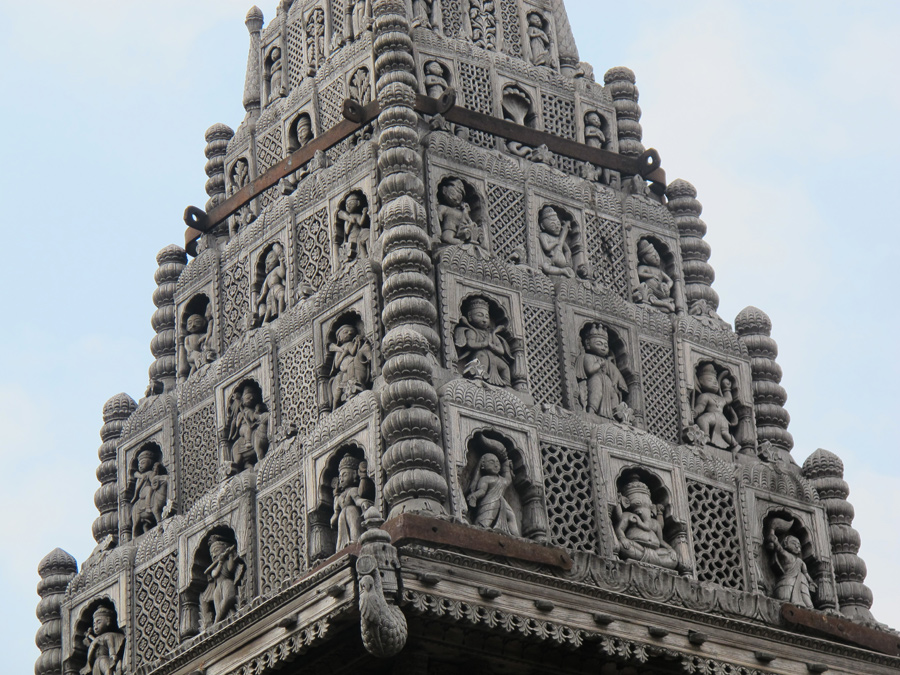
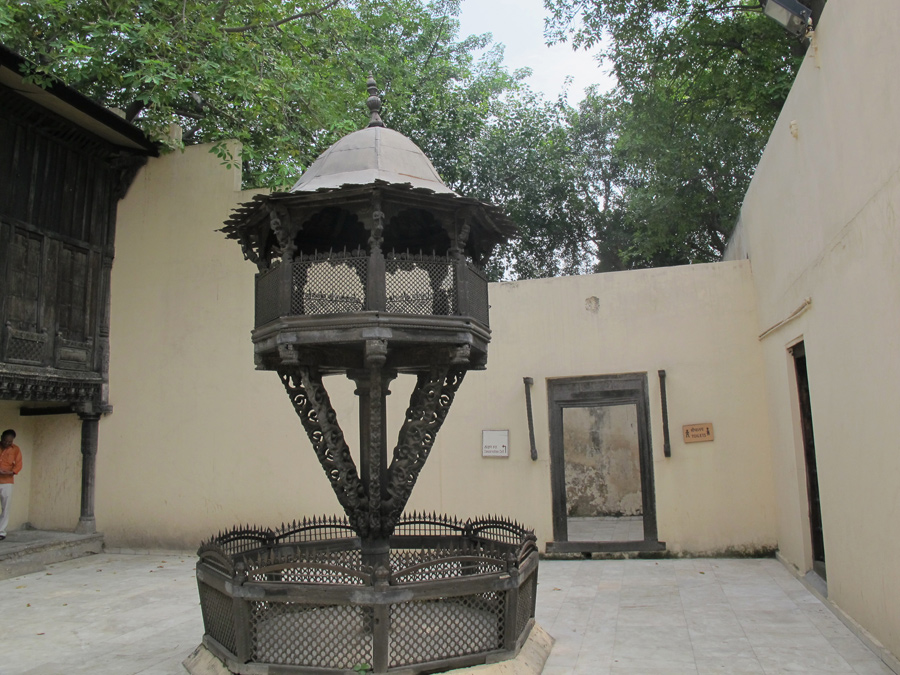
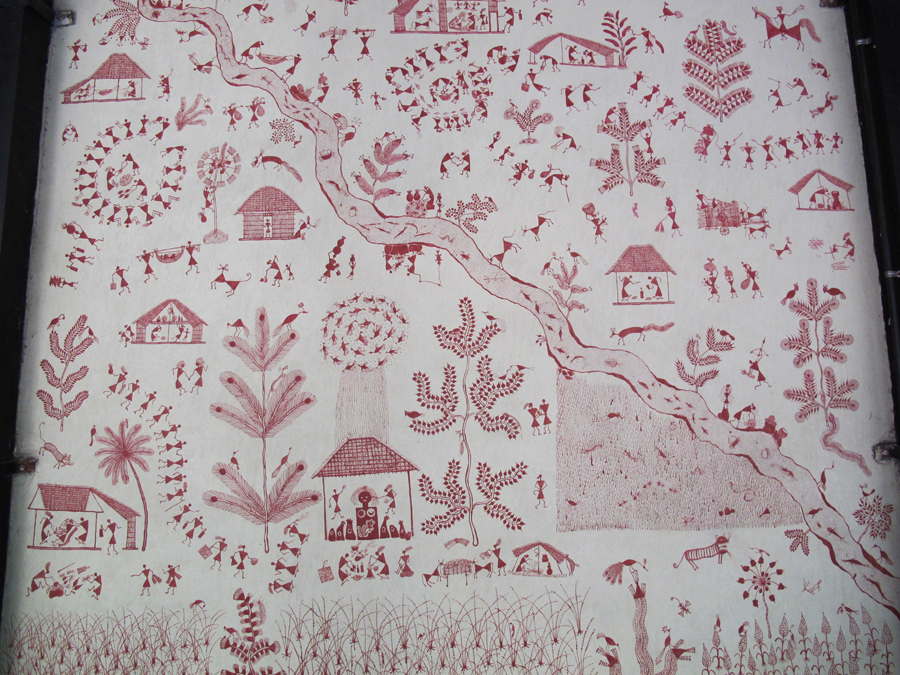
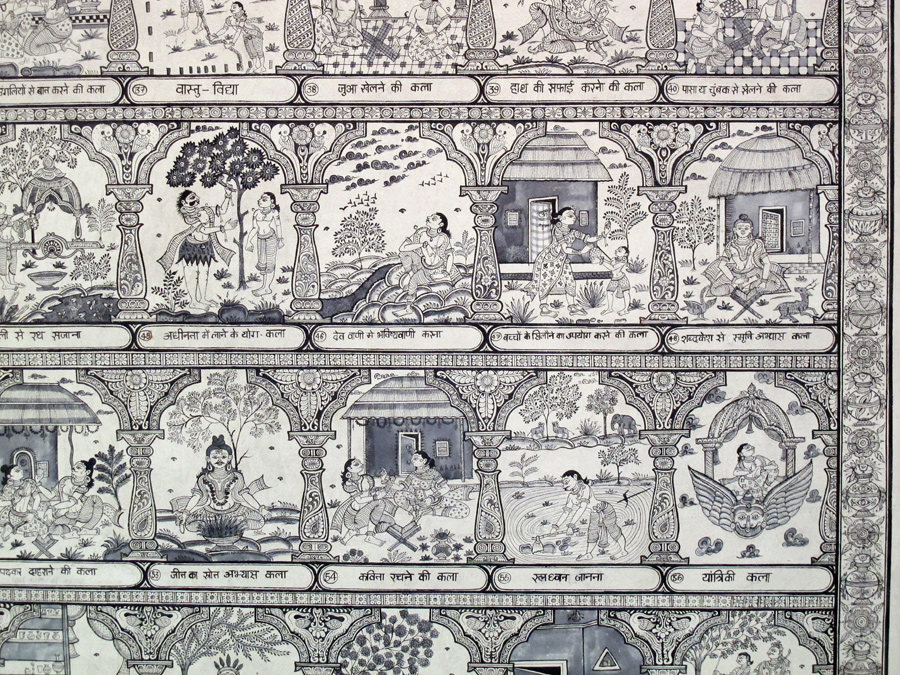
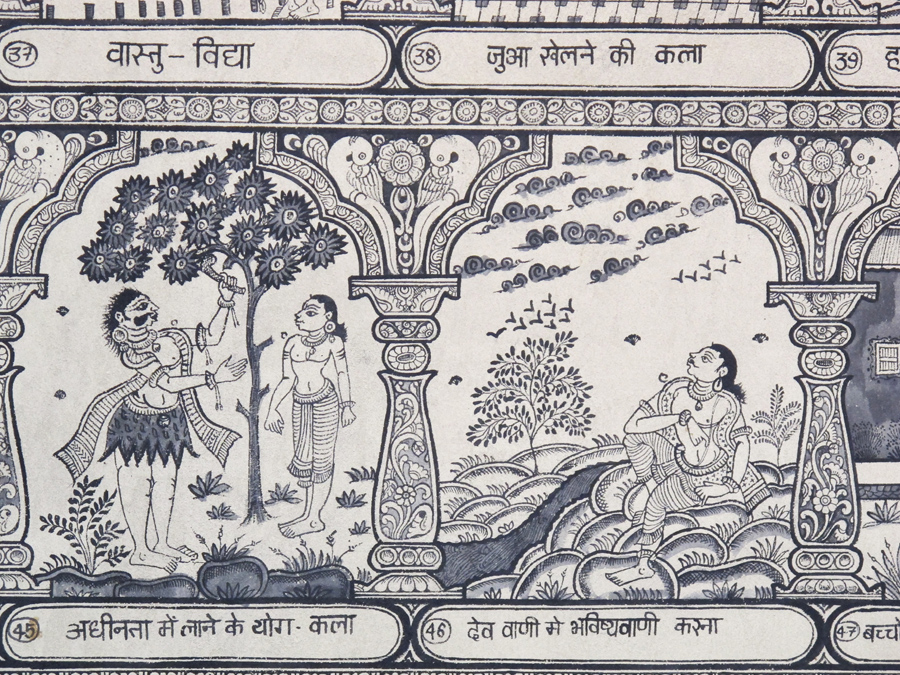
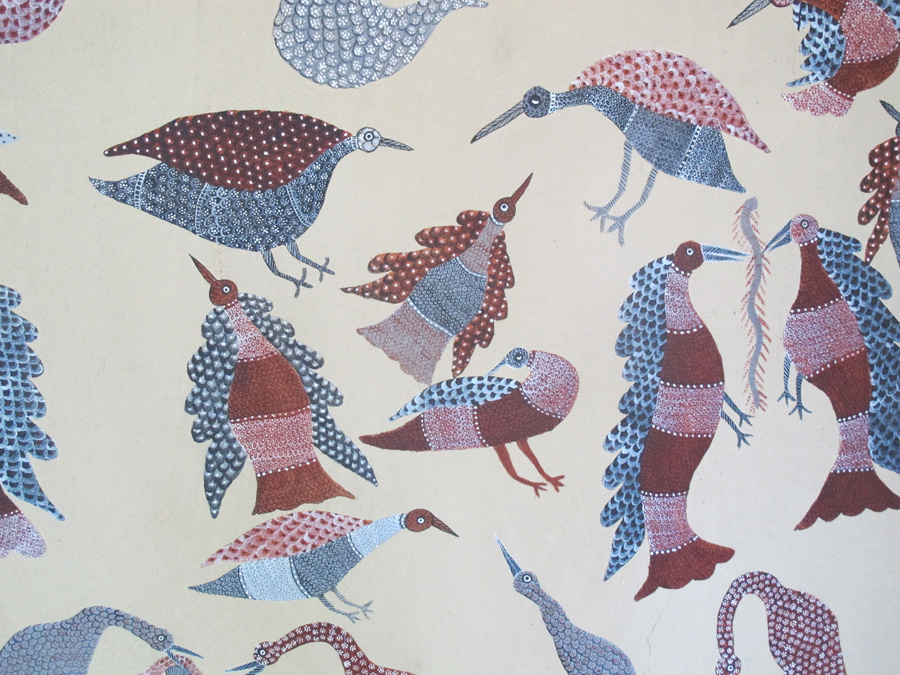
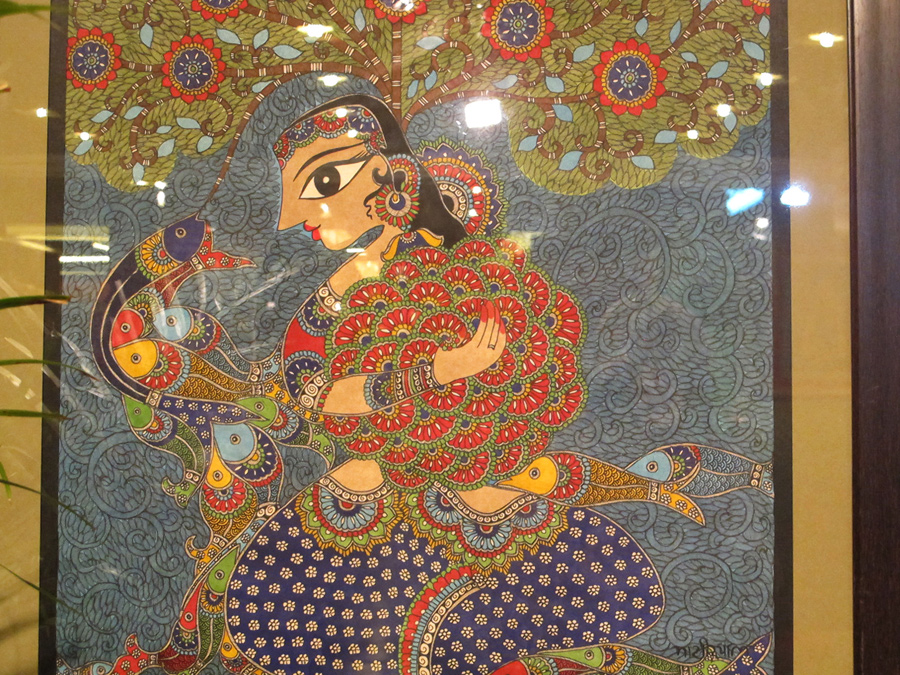
Great writing, Julie. It is interesting to read your description of Jamini Roy. As for that incident with the Visa card or monetary change is concerned that is typical, as you have observed. At least they allowed you to photograph in that craft museum! I thought you could not photograph anything there….:-(
Thanks for commenting, Dipen. We could photograph in the outer parts of the Crafts Museum, not inside the galleries. Part of the reason I liked it so much was that it is not all confined indoors, so it has a natural, relaxed feel. The architecture is part of the museum, in a real sense ,not just a shell for it. So some blog photos are taken from the web (which we have acknowledged). I imagine you know of Jamini Roy, he being a Bengali?
Love the temple car, what a conversation piece to have in the back yard. Of course I am most impressed by the carving, wishing one had the patience to be so intricately creative. No, been there done that, just not on such an epic scale; and I suppose with no modern distractions and a carve to survive imperative, or perhaps religious zeal, or maybe just a passion for the craft, it is not surprising such masterpieces are created. And the pigeon house…
Sad yet happy to hear the story of Dilip, a face to the probably millions who move to the city to earn money for their family back home. I wish him good fortune. And to you Julie and Michael, a good journey, good health, new insights and wisdom.
Tony.
Yes, a great conversation piece!! The wood carvers would be dedicated craftsmen -they have hereditary families of such craftsmen (potters, stone masons etc). You’d have liked to be in one of those! I love the pigeon house too, that would be my preferred backyard piece. Hey, you could make one of those for your birds..maybe it wouldn’t work for budgies 🙂
As for Dilip, it is such a common thing for men to work away from home ,even in other countries, for years sometimes. He works 7 days a week, too. And his wife is not educated, so she finds it too hard to use a mobile phone to send baby photos or even to talk much..(he bought one for her)…
Thanks for your good wishes, Tone, same to you. xx
What a fascinating time you two are having! I’m enjoying your postings and can’t help but think how amazing all this technology is that makes communications so instantaneous. And we take it for granted. I’ve been reading about Hinduism and the Upanishads, finding one of Denis’ books by Nancy Wilson Ross wonderfully informative and giving an abridged but insightful overview of Indian culture and the background of Hinduism that permeates to this day. It and your postings make me curious about finding out more. If I were younger I suspect I’d be visiting, even though it is becoming a bastion of Capitalism and its accompanying corruption. However, it seems India has some experience in absorbing invaders and I’m sure the philosophy that lies behind millennia of greeting the new day with ritual and song will prevail over worship of mammon. Keep us informed of your experiences — it’s nearly as good as travelling with you.
Hi Carl – I agree, Hindu culture and its background philosophies are a fascinating study and not enough people in the western world have been interested, I think. It’s a huge study, too, isn’t it! As for ‘permeating to this day’, that is right, for sure. In its many forms. Of course many “Hindus” (ie Indians of Hindu religious background) are secular, as were the young hosts at our guest house in Kasar Devi. I am not sure though that they realised how very “Hindu” they still were in social customs, though. I guess it is like that for us in Christian dominated countries, that we don’t see ,from the inside, just how much that background forms our thought and behaviour.
And not just Christianity but Capitalism too. What a big topic this is…India is certainly rushing to the proffered joys of capitalism but stumbling quite a lot along the way..not without doing a fair bit of social and environmental damage, of course But good things are also happening with some diseases being eradicated, some water systems cleaned up, some infrastructure added (though not enough to keep pace, not like China. India is more complicated in some ways than China, being a democracy). Because more dissent is allowed, it is slower for things to happen, but people at least get a say. Not that it might do them much good..
Oh yes, the internet, it’s so amazing. Sometimes I’m not sure if it’s a curse or a blessing. I worry that it fragments my thinking and energies ie that my overuse of it does. It heartens me that you like the blog. I’ve been a bit unwell to write it, lately.